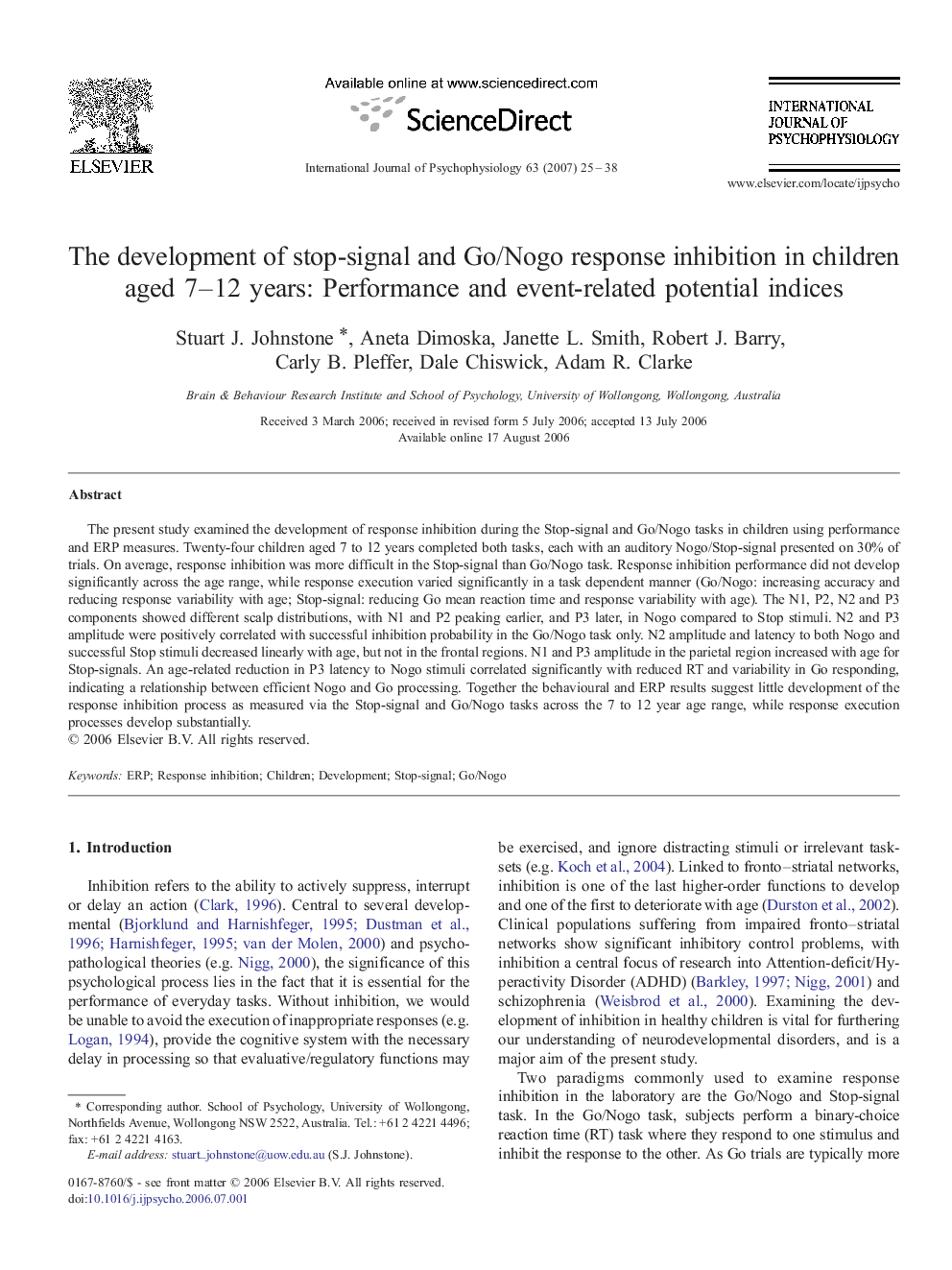| Article ID | Journal | Published Year | Pages | File Type |
|---|---|---|---|---|
| 930902 | International Journal of Psychophysiology | 2007 | 14 Pages |
The present study examined the development of response inhibition during the Stop-signal and Go/Nogo tasks in children using performance and ERP measures. Twenty-four children aged 7 to 12 years completed both tasks, each with an auditory Nogo/Stop-signal presented on 30% of trials. On average, response inhibition was more difficult in the Stop-signal than Go/Nogo task. Response inhibition performance did not develop significantly across the age range, while response execution varied significantly in a task dependent manner (Go/Nogo: increasing accuracy and reducing response variability with age; Stop-signal: reducing Go mean reaction time and response variability with age). The N1, P2, N2 and P3 components showed different scalp distributions, with N1 and P2 peaking earlier, and P3 later, in Nogo compared to Stop stimuli. N2 and P3 amplitude were positively correlated with successful inhibition probability in the Go/Nogo task only. N2 amplitude and latency to both Nogo and successful Stop stimuli decreased linearly with age, but not in the frontal regions. N1 and P3 amplitude in the parietal region increased with age for Stop-signals. An age-related reduction in P3 latency to Nogo stimuli correlated significantly with reduced RT and variability in Go responding, indicating a relationship between efficient Nogo and Go processing. Together the behavioural and ERP results suggest little development of the response inhibition process as measured via the Stop-signal and Go/Nogo tasks across the 7 to 12 year age range, while response execution processes develop substantially.
